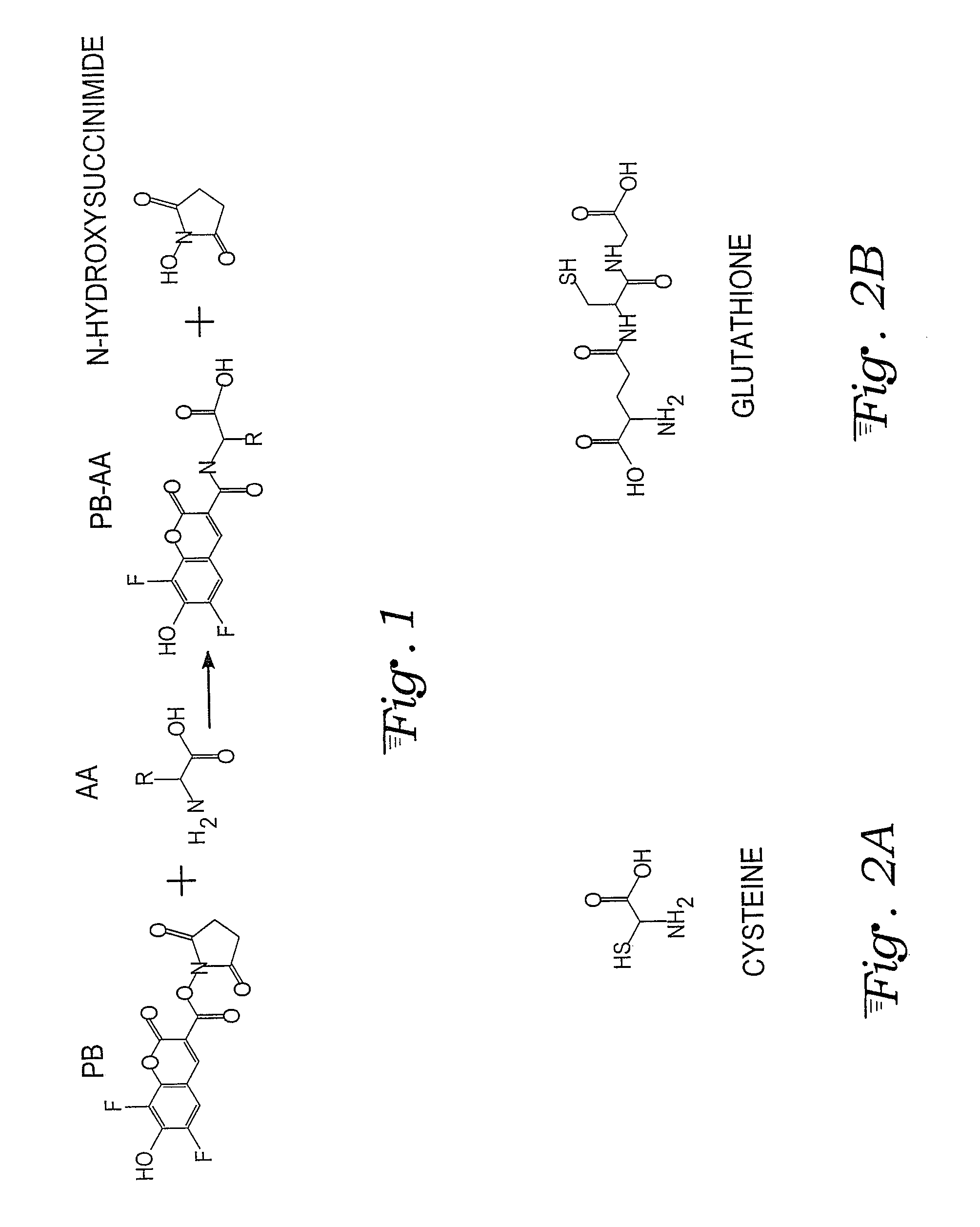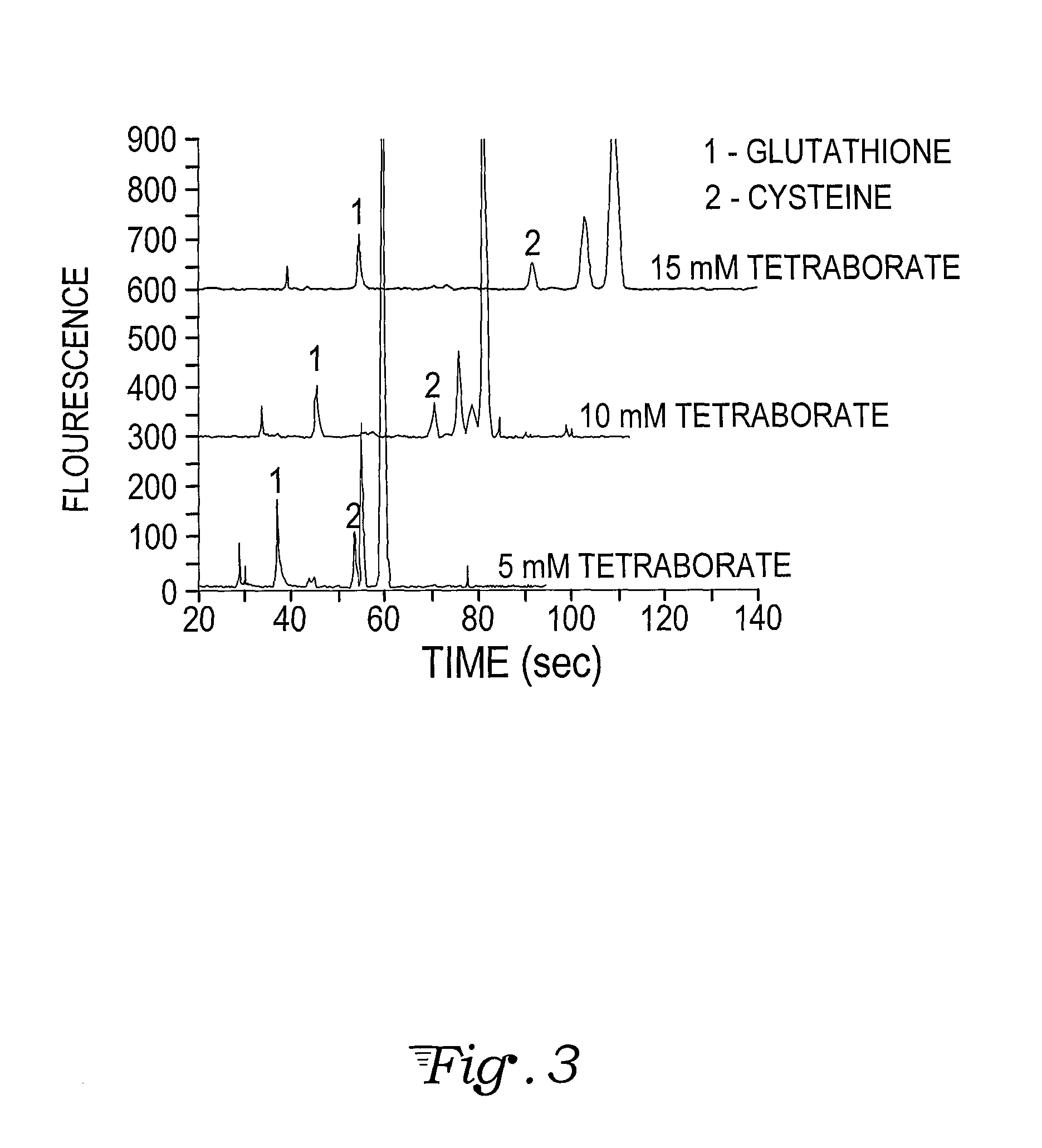Fluorescence dye tagging scheme for mercury quantification and speciation
a fluorescence dye and mercury quantification technology, applied in the direction of fluorescence/phosphorescence, instruments, organic chemistry, etc., can solve the problems of methylmercury, human health serious problems, and the existence of any form of mercury, so as to improve the nhs (n-hydroxy succinimide) reaction chemistry, the effect of improving the fluorescence quantum yield and reducing the extinction coefficien
- Summary
- Abstract
- Description
- Claims
- Application Information
AI Technical Summary
Benefits of technology
Problems solved by technology
Method used
Image
Examples
Embodiment Construction
[0026]A sample mercury-cysteine / PB derivatization procedure is outlined below:[0027]1. 121.16 mg (1 mmol) of L-cysteine (Cys) (CAS [52-90-4]; Catalog #: 30089 from Sigma Aldrich) is dissolved in 10 mL of DI H2O in a Class A 10 mL volumetric flask (Sigma Aldrich) to bring the concentration to 100 mM. 5 mL of the 100 mM Cys solution is pipetted using a volumetric pipette into a 50 mL volumetric flask and brought to volume with DI H2O, for a 10 mM concentration of Cys. This is the stock solution for derivatizations.[0028]2. 20 mM of Pacific Blue™ (PB) stock solution (Invitrogen, P10163) is prepared by dissolving 5 mg (0.01474 mM) of Pacific Blue succinimidyl ester in 737 μL of n,n-dimethyformamide (DMF) (Sigma Aldrich) using a VWR automatic pipette checked for precision in-house. The vial is mixed with a Vortex Maxi Mix II to insure uniformity in the solution. Five 50 L aliquots are auto pipetted (checked for precision in-house) into five separate amber micro centrifuge tubes which alo...
PUM
| Property | Measurement | Unit |
|---|---|---|
| pH | aaaaa | aaaaa |
| fluorescent dye | aaaaa | aaaaa |
| concentration | aaaaa | aaaaa |
Abstract
Description
Claims
Application Information
 Login to View More
Login to View More - R&D
- Intellectual Property
- Life Sciences
- Materials
- Tech Scout
- Unparalleled Data Quality
- Higher Quality Content
- 60% Fewer Hallucinations
Browse by: Latest US Patents, China's latest patents, Technical Efficacy Thesaurus, Application Domain, Technology Topic, Popular Technical Reports.
© 2025 PatSnap. All rights reserved.Legal|Privacy policy|Modern Slavery Act Transparency Statement|Sitemap|About US| Contact US: help@patsnap.com



